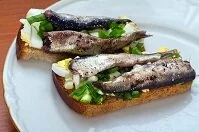Dining Etiquette

Fish
To prepare for a meal with locals in Estonia, dress conservatively, bring a gift like chocolates, and arrive on time. Estonians are fairly private people so they will probably take you straight to their dining room without showing you any other part of their house. Instead of trying to look into adjoining rooms, offer to help your host prepare the meal, an offer which may be accepted.
As you sit down your host will show you your seat, but don't actually sit until everyone sits. The meal will typically consist of a number of dishes, like cold appetizers, a soup, and the main course, which is often served with bread. Eat in the continental style (knife in the right hand, fork in the left) and once finished, leave nothing on your plate. Conversation over a meal should be conservative like the dress; politics, business (even if at a business dinner), and any controversial subject is off limits.
When eating at a sit down restaurant with a server, you should round up or tip about 10% of the bill. In bars a tip is appreciated but not necessary.